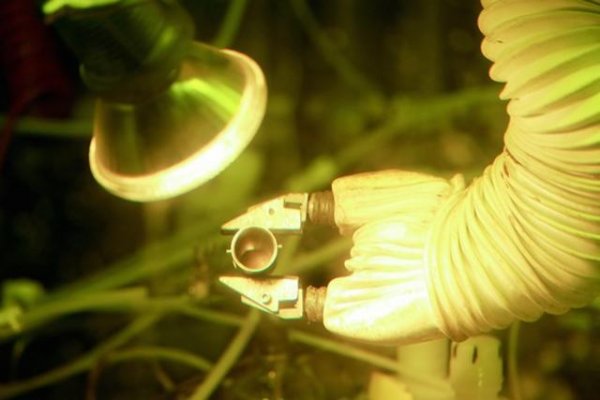When Khooshboo Dani dreamed of traveling through space and building something in the universe from an early age, she never thought of what would be her driving force for navigation.

The dream of human deep space travel (picture from the Internet)
Inspired by Neil Armstrong's biography and her trips to the Kennedy Space Center in Florida and the Boeing Factory in Seattle, she decided to pursue a graduate degree in aerospace engineering after earning a bachelor's degree in aerospace engineering at Amrita University in India. Now, as a graduate student in the Viterbis Aeronautical Engineering Department (MS 19) and a former member of the Liquid Propulsion Laboratory (a student-led rocket construction team), she has an interest in power systems.
This summer, Danny took an internship at the Center of Space Nuclear Research (CSNR) at the Idaho National Laboratory. The laboratory is an institution that develops advanced nuclear systems for space travel. The task of her and four other college students' research team is to determine the interaction of nuclear fuel with surrounding materials and how this interaction affects the efficiency of energy conversion.
Although short-range space missions can use solar panels to generate electricity, for deep space missions and missions that require more power, solar energy is not enough. Instead, they must use nuclear energy generated by radioisotope thermoelectric generators (RTGs).

Structure diagram of radioisotope thermoelectric generators (RTGs) (picture from the network)
Basically, its working principle is the decay of radioactive materials, in our case plutonium-238, and the heat generated is converted into electrical energy by thermocouples, Danny explained.
The newer RTG design can power multiple tasks, called MMRTGs. They use a modular design to generate electrical energy in smaller increments.
The first spacecraft using radioisotope power was the Transit satellite launched in 1961. Since then, RTGs have been used in many projects such as Voyager and Cassini orbiters. Recently, MTRTG was used on the Mars Rover Curiosity and will be used on the future Mars Rover 2020.

NASA staff has prepared a multi-mission radioisotope thermoelectric generator (MMRTG) for the Mars Curiosity probe.

Mars Curiosity Probe (NASA)
MMRTG usually has eight heat source modules, each of which contains a fuel ball made of plutonium-238. To protect the radioisotope, these components are wrapped in a graphite shell, which is lined with a protective coating. Danny and her team are responsible for analyzing how the molecules produced during the decay of plutonium-238 diffuse and react with surrounding materials.
Danny said that plutonium-238 is a strong alpha emitter that produces helium. These helium molecules will form a ditch in the ball for a period of time, which will affect the speed of electricity generation.
This decay also releases oxygen molecules, which may make the graphite shell brittle and vulnerable during potential impact. In a year or two, these capsules are used for assembly, waiting for the task, and have enough time to react to hinder the components.

Plutonium-238 has a half-life of 88 years and is an ideal long-term power source. (The picture comes from the network)
The industry currently understands the physical principles behind it, but is unsure of the consequences of its actions. So, what we did was build a model to help them analyze the internal conditions of the particles before launch, Danny said.
This is a team of students from different backgrounds, from chemical engineering, materials science to nuclear engineering, they have created a framework of computer models that allow CSNR scientists to change the initial conditions of parameters such as temperature and pressure, and gas dynamics will affect the material Interaction. Their work can help improve the future design of MMRTGs and provide references.
Although the history of human beings possessing nuclear energy is filled with catastrophic accidents such as atomic bombs and Chernobyl, there is currently no single energy source that can produce so much energy per unit volume.

Nuclear energy can be a destructive weapon, but it is currently the only energy source for deep space travel. (The picture comes from the network)
"So far, in addition to nuclear energy, people have not found other practical technologies." Danny said: "I think that before we find a better technology to power our spacecraft in deep space missions, nuclear energy is the current It may also be the only option in the future. "
(Originally from: Daily Solar China New Energy Network Comprehensive)
1M Mini Measuring Tape,Small Retractable Tape Measure,Precision Tape Measure,Tape Measure Scale
SHANGQIU CHAOYUE MEASURING TOOLS CO., LTD , https://www.calibrateds.com
